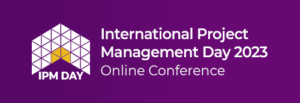By Jennifer Lapin
September 6, 2023
Not every exam requires four years of senior level qualified experience prior to the exam sitting opportunity. There are only a few thousand Portfolio Management Professionals (PfMP®) worldwide, according to PMI, making this a truly elite qualification. It is also one of the most difficult certifications to obtain, because a candidate must have a specific experience requirement and they need to follow a meticulous application process.
Before you start the PfMP® Exam preparation, I highly recommend you assess your experience in Portfolio Management by:
- Reading the PfMP® prerequisites (https://www.pmi.org/certifications/types/portfolio-management-pfmp);
- Studying PfMP® Handbook.
- Checking Exam content outline.
- Carefully reading at least the first three chapters of Portfolio Management Standard in order to understand what Portfolio means in PMI Standard.
My application journey was tricky, and it took me six months overall, including two months of experience describing and four months of two Panel Reviews.
It happened to be a challenging exercise to structure my portfolio experience by Domains according to the Portfolio Standard. Before you start filling out the application, make sure to read the Portfolio Standard and try to understand the big picture and the concept of portfolio management because that will be a crucial point for successful Panel Review of your application.
It took me around two months of 1-2 hours daily involvement to finalize my application. One of the most important decisions was to choose the right Portfolio for the Application. The second sophisticated part was to recollect and describe 4 years’ experience in PMI terms.
Under my PMO Director experience, I used to manage different programs and projects that composed several portfolios; thus, it was a big deal to choose the right portfolio and to make correct distinguishment between portfolio and program. My advice is not to try to reflect many portfolios in the application because portfolios tend to be of a strategic and long-term nature. When choosing a portfolio, try to think about how it helped to reach the company strategy to the top-level. That should help you to make the right choice.
A month after my application submission, I received a note from PMI with a request to elaborate my experience section and clarify some points. It took me two weeks to prepare the second version of the summary experience.
The second round of Panel Review took much more time. I didn’t hear from PMI for two and a half months. I realized that there could have been a delay due to Covid-19 disruption and I had to write a reminder letter to PMI emphasizing the dramatic influence of the application review delay on my exam preparation schedule. Two days after the reminder I received my approval. I was very thankful to PMI which I always believed in!
I believe that regular recollection and structuring your experience is very important for your personal and professional growth. Comparing my experience with the worldwide practices gave me many insights and opportunities for further development.
Here are my top tips for PfMP application preparation:
- Make an assessment of the eligibility of your experience.
- Read the Portfolio Standard, Handbook and ECO (Exam Content Outline) in order to understand the Portfolio concept in PMI terms.
- Choose the right portfolio which reflects the maximum experience applying to the PMI Standard concept.
- Plan your study with regard to current risks (COVID).
- Be patient and be aware of the possible deadlines.
I wish you success in a thrilling PfMP journey!
Jennifer Lapin, PfMP®, PMP®
Enterprise PMO Leader | Certified Coach ICF
https://www.linkedin.com/in/jenlapin/
Jennifer Lapin is an accomplished Enterprise PMO Director with over two decades of experience across diverse sectors including retail, energy, airlines, and consulting. A results-oriented visionary, Jennifer specializes in establishing effective enterprise PMOs to drive transformational changes and the seamless implementation of complex IT projects.

Check out IIL’s Portfolio Management Professional Courses here!
Disclaimer: The ideas, views, and opinions expressed in this article are those of the author and do not necessarily reflect the views of International Institute for Learning or any entities they represent.


